We may earn revenue from the products available on this page and participate in affiliate programs. Learn More ›
When you test gear for a living you get asked for recommendations a lot. Friends, family, people wandering by as you’re testing the best backpacking water filters or the best solar generators. Sometimes people get long-winded answers from me about their specific needs or the razor-thin margin between this or that choice. But not with solar generators, because the answer is clear: The Jackery Solar Generator 1000 Pro is a best-in-class setup for everything from home emergency scenarios to overlanding. Let’s take a look at why.
Jackery 1000 Pro Specs and Features
- Power Station Capacity: 1002 watt hours
- Lithium-ion battery
- 1000 cycles to 80+ percent capacity
- Max AC Output: 120 volts and 1000 watts
- USB-C Output: 100 watts
- Four 200-watt solar panels
- Solar panels are IP68 waterproof and dustproof certified
- Also available with a 2000Wh power station or 3000Wh power station
- Also available with two 80-watt panels
There are two parts to every solar generator: a solar panel (or panels) and a power station. For the Jackery Solar Generator 1000 Pro, it’s the Explorer 1000 Pro and SolarSaga 200W.
Jackery Explorer 1000 Pro
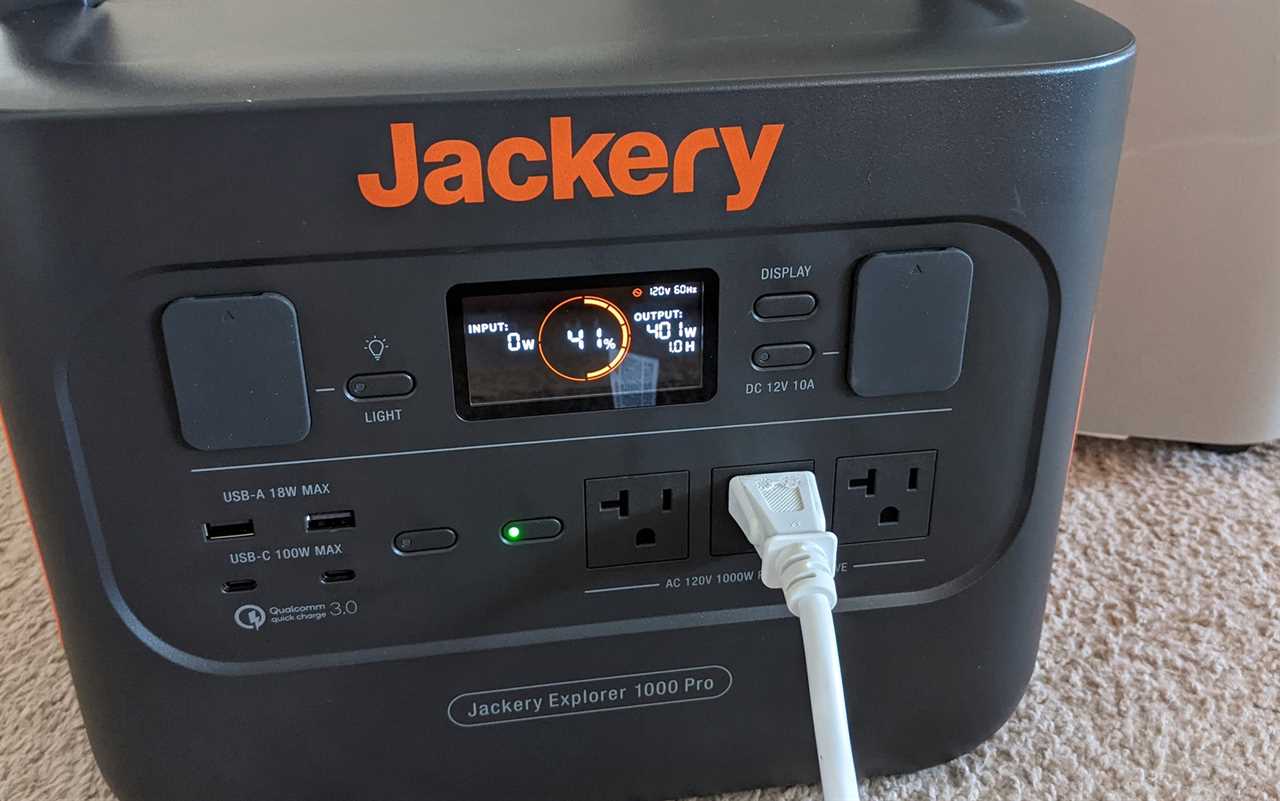
There is a plethora of ports on the Jackery Explorer 1000 for convenient powering of multiple electronics. Laura Lancaster
The Jackery Explorer 1000 Pro has a simple interface. There is a display screen, which shows how much power is being used (or generated), as well as how much time it will take to deplete (or fill) the power station in its current state. There are separate on/off buttons for the three AC ports and the USB ports (two USB-A and two USB-C) as well as the car charger port. There is also a light on the unit, in case you forget your camping lantern at home. The back of the unit has plug-ins for two solar panels, as well as a wall plug.
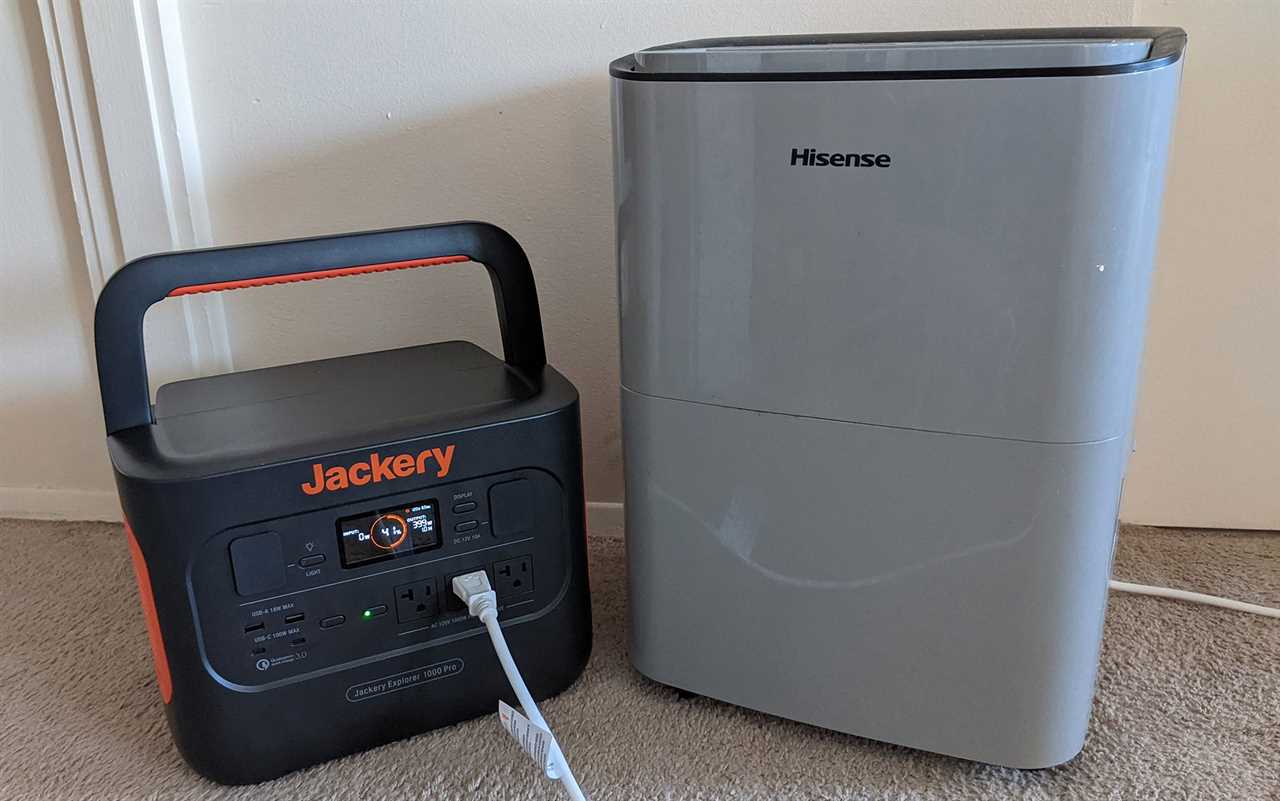
The Jackery 1000 Pro is capable of powering even power-hungry appliances, like this dehumidifier. Laura Lancaster
The Explorer 1000 Pro has a max output of 1000W (peaking at 2000W), which is enough juice to power many modern refrigerators. But given that its battery life is only 1002Wh, it can only supply that power for about a day (assuming it’s not charging anything else) unless it’s also being supplied with fresh juice from a solar panel setup at the same time. For some, this won’t be an issue, as they’ll simply be using the battery to channel power to their other devices during the day while it’s charging, and then using the battery at night to power more low-key items like the best camping fans or maybe one high-energy device like a portable fridge. (Individuals with higher power needs should opt for setups using the Jackery Explorer 2000 Pro or Explorer 3000 Pro).
Jackery SolarSaga 200W
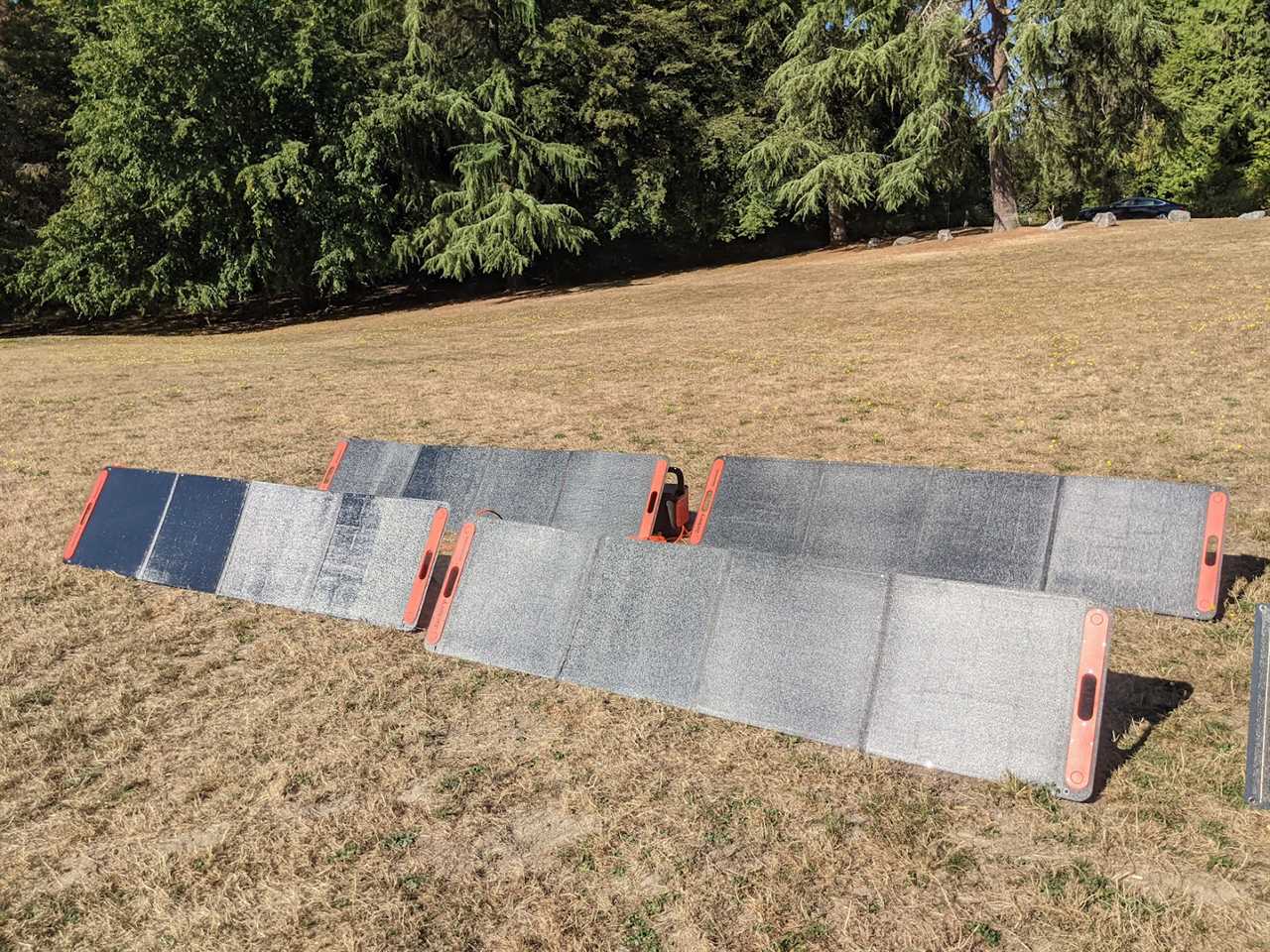
Setting up the accordion-style SolarSaga panels is easy and simple.
The SolarSaga 200W is an accordion-style panel that comes in a simple carrying case with a zip pocket for the attached cords. To set it up, you simply take the panel out of its bag, unfold it, pull out the kickstands, and point it in the direction of the sun. Once you’ve plugged the cord into the solar panel and one of two input ports on the power station you’re in business.
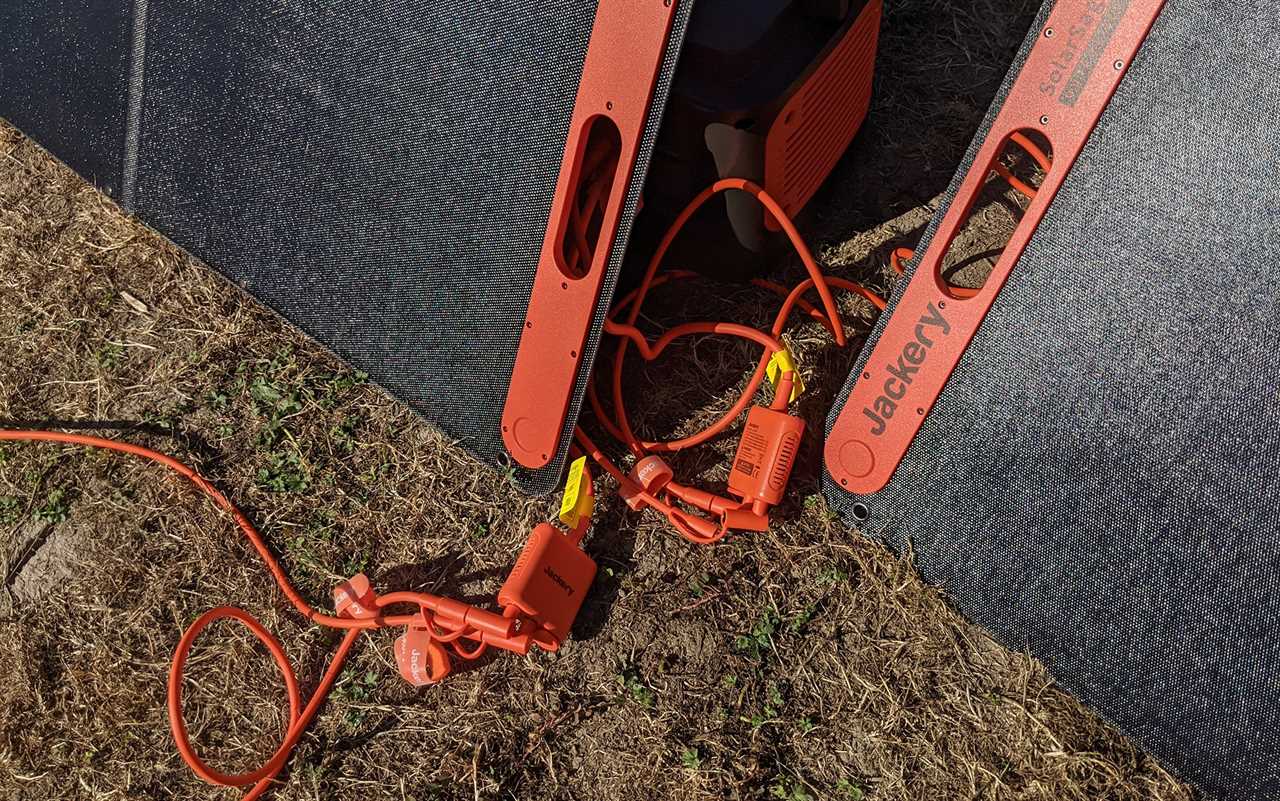
Four cables from each of the panels connected to two solar panels hooked up to the battery makes for a big cable-y mess. Laura Lancaster
While setting up a single panel is straight-forward enough, using the four panels in tandem is a bit trickier. First, you’ll need to plug the four panels into the two Jackery Solar Panel connectors and then plug the two connectors into the power station. The panels can only be so far away from one another (and the power station) when you do this, so set them up as close together as possible to avoid having to do it twice.
Testing the Jackery 1000 Pro in the Field
I typically keep a solar panel on my covered patio at all times to take advantage of my home’s eastern exposure. Whenever a new panel comes in from the likes of Anker, Zendure, BioLite, EcoFlow, or Goal Zero, I’ll set it up for a few days, to see how it does in different conditions. Then I take it down and set the Jackery Solar Generator 1000 Pro back up. Unless there is an extreme weather situation on the horizon, it’ll stay there until the next test unit arrives, generating enough power for my family’s phones and laptops.
Part of the reason this setup gets pride of place in my home is that it’s outperformed everything I’ve tested. For my test of the best solar generators, I set up six different panels outside at the same time to see how they compared, taking care to ensure each was angled similarly. Of the three 200-watt panels I looked at, the Jackery SolarSaga 200W was far and away the winner, producing 184 watts. I had seen similar results during a previous test of the full might of the four-panel setup: When chained together into the Explorer 1000 Pro it produced 655 watts of power, enough to fully charge the station in only a couple of hours.
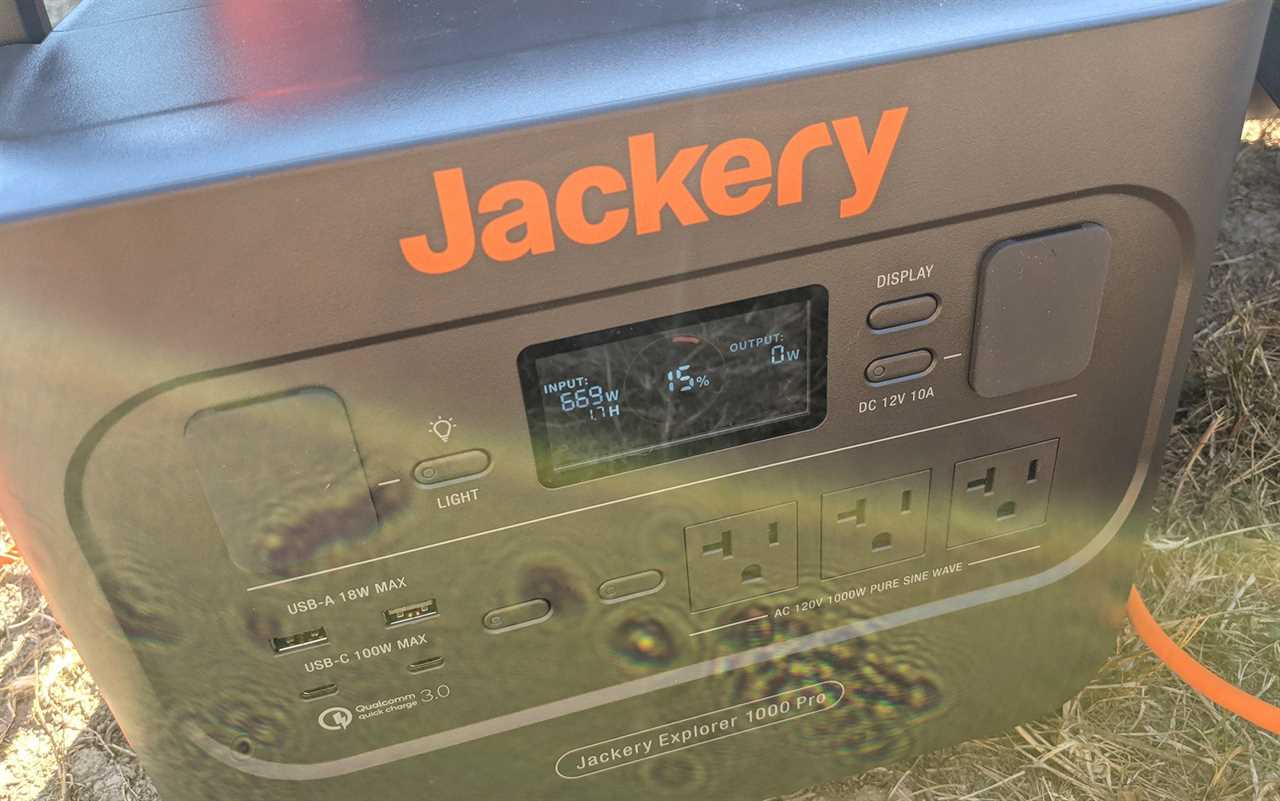
It was impressive how quickly the four panels chained together could power up the 1002wh power station. Laura Lancaster
This power station has also held a charge better than anything else I’ve tested. After months of sitting in an unheated garage, it still showed 100 percent full power (other power stations in similar conditions lost an average of 10 percent of their power).
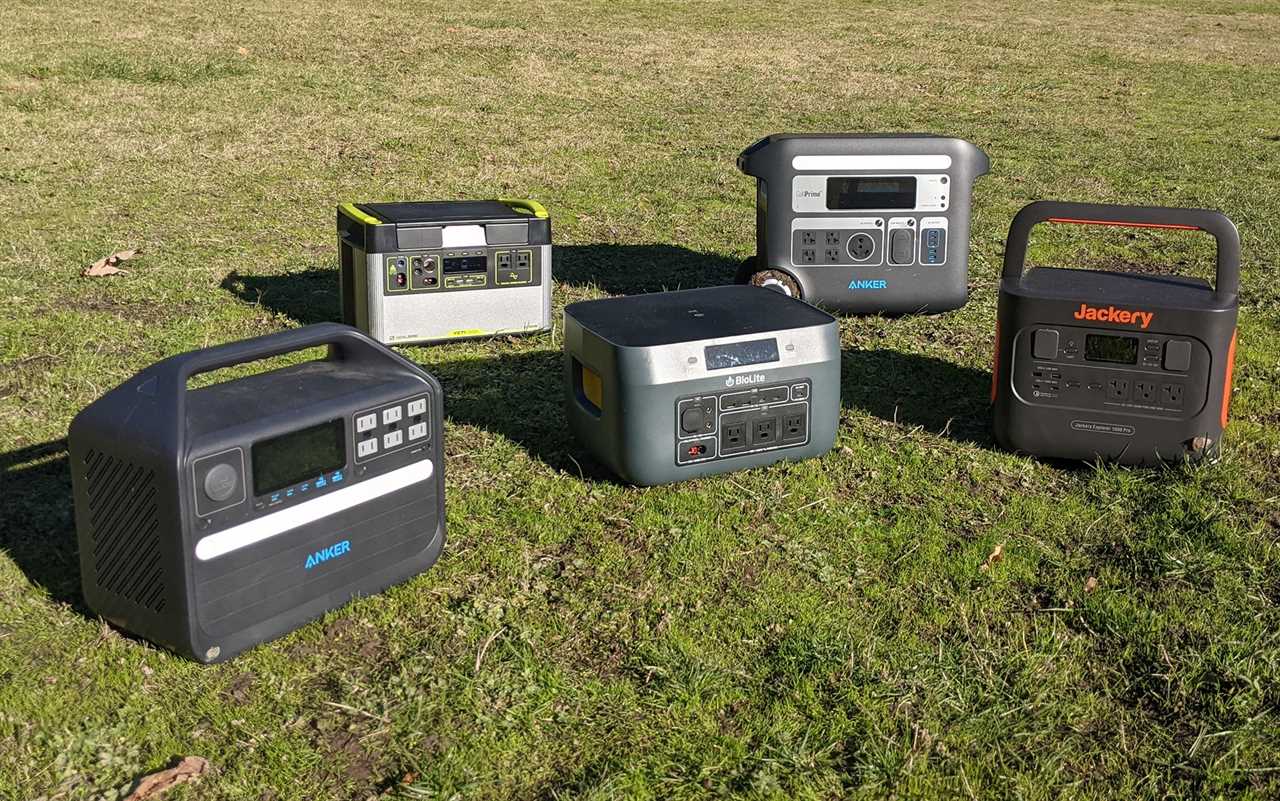
In my tests of the best power stations, the Jackery 1000 Pro has been one of the most reliable. Laura Lancaster
But what impresses me most, time and again, is the panel itself. Where other solar panels need at least a hint of sun to excite the electrons inside, the 200W Jackery panel can generate power in extremely low light conditions. On even the cloudiest days, when I can’t even tell where the sun is on the horizon, the 200W panel is producing power—heck, it’s even producing power in full shade in early evening. And the power cord for the panel is one of the more versatile I’ve tested, meaning I frequently don’t have to swap in a new panel when I’m testing a different power station.
What the Jackery 1000 Pro Does Best
This panel setup is fairly compact, easy to use, and produces power like a champ. Its versatility and reliability in low light conditions makes it an excellent choice for both camping and overlanding as well as emergency home power needs. (If you’re concerned that the 1000 Pro isn’t enough juice for all your electronic needs there’s also the option to update to the 2000 and now also the 3000 model). It’s also on sale surprisingly often, so if you’ve got sticker shock—I’ve yet to see a “budget” solar charger or generator worth bothering with—then just set a reminder for yourself to check back on the next Cyber Monday or Amazon Prime day.
What the Jackery 1000 Pro Does Worst
True data nerds may miss some of the detail provided by the likes of Anker or Goal Zero—there is no way to suss out which outlet is using what power with the Explorer 1000 Pro, or monitor the lifetime power expenditure of the unit. The Explorer 1000 Pro and the Explorer 2000 Pro also lack app functionality (although the Explorer 3000 Pro does have this capability, along with an RV plug). As someone who frequently misplaces charging cords, I also wish there was a way to charge the unit using a common USB-C to USB-C cable.
I have only one small gripe with this solar panel: the lack of a sundial feature. During testing, I set up the Anker 625 and BioLite 100-watt solar panels first, so that I could see the direction of the sun using their sundials, and then simply set up the rest of the panels to match. The sundial makes such a big difference that I would recommend purchasing one separately to clip onto one of your panels.
Final Thoughts
From unexpected power outages to off-grid adventuring there are plenty of reasons to invest in a quality solar generator setup. Not only did the Jackery Solar Generator 1000 Pro come out on top in a series of tests of the best solar panels and the best power stations, it’s also my go-to at home, and what I recommend to friends and family who ask about making a purchase for their own home.
The post Jackery Solar Generator 1000 Pro: Reliable Performance Without the Bells and Whistles appeared first on Outdoor Life.
Articles may contain affiliate links which enable us to share in the revenue of any purchases made.
By: Laura Lancaster
Title: Jackery Solar Generator 1000 Pro: Reliable Performance Without the Bells and Whistles
Sourced From: www.outdoorlife.com/gear/jackery-solar-generator-1000-pro/
Published Date: Thu, 06 Apr 2023 15:00:00 +0000
----------------------------------------------
Did you miss our previous article...
https://manstuffnews.com/weekend-warriors/bear-hibernation-uncovering-black-bear-denning-secrets-in-arkansas
 Backyard GrillingWeekend WarriorsAdvice from DadBeard GroomingTV Shows for Guys4x4 Off-Road CarsMens FashionSports NewsAncient Archeology World NewsPrivacy PolicyTerms And Conditions
Backyard GrillingWeekend WarriorsAdvice from DadBeard GroomingTV Shows for Guys4x4 Off-Road CarsMens FashionSports NewsAncient Archeology World NewsPrivacy PolicyTerms And Conditions
